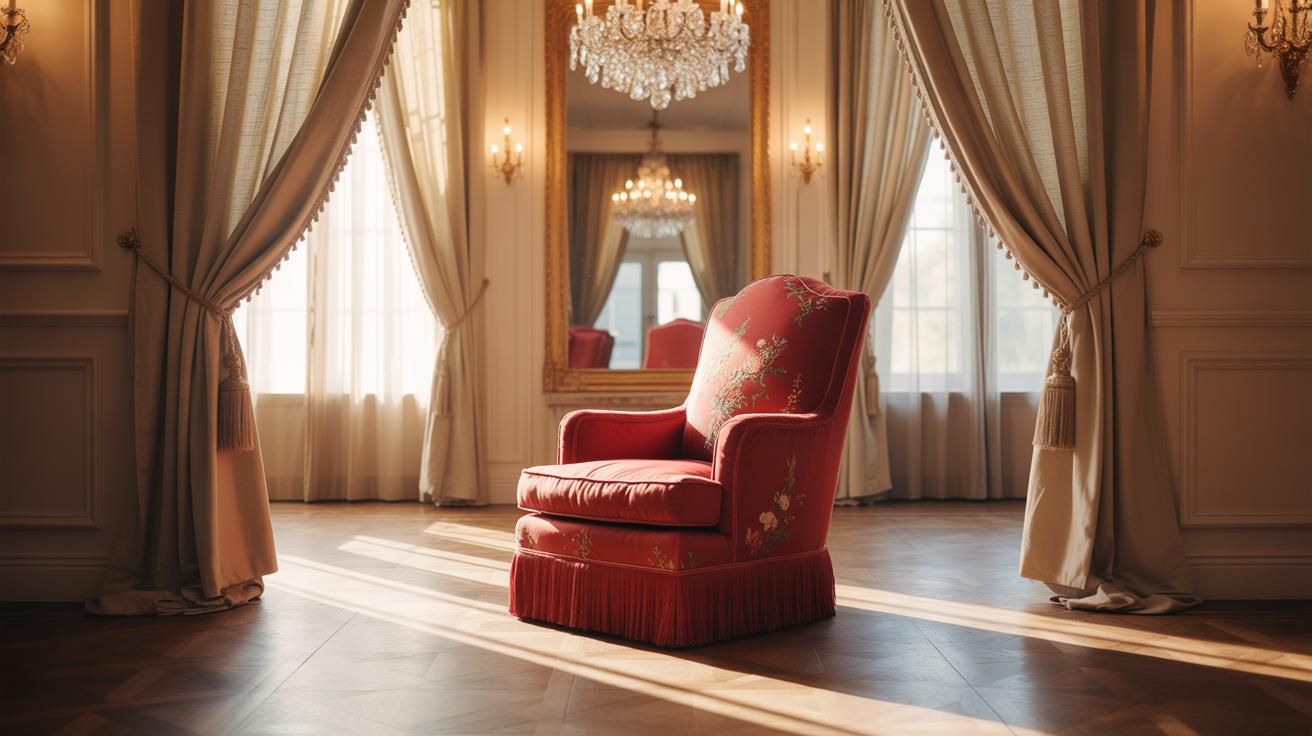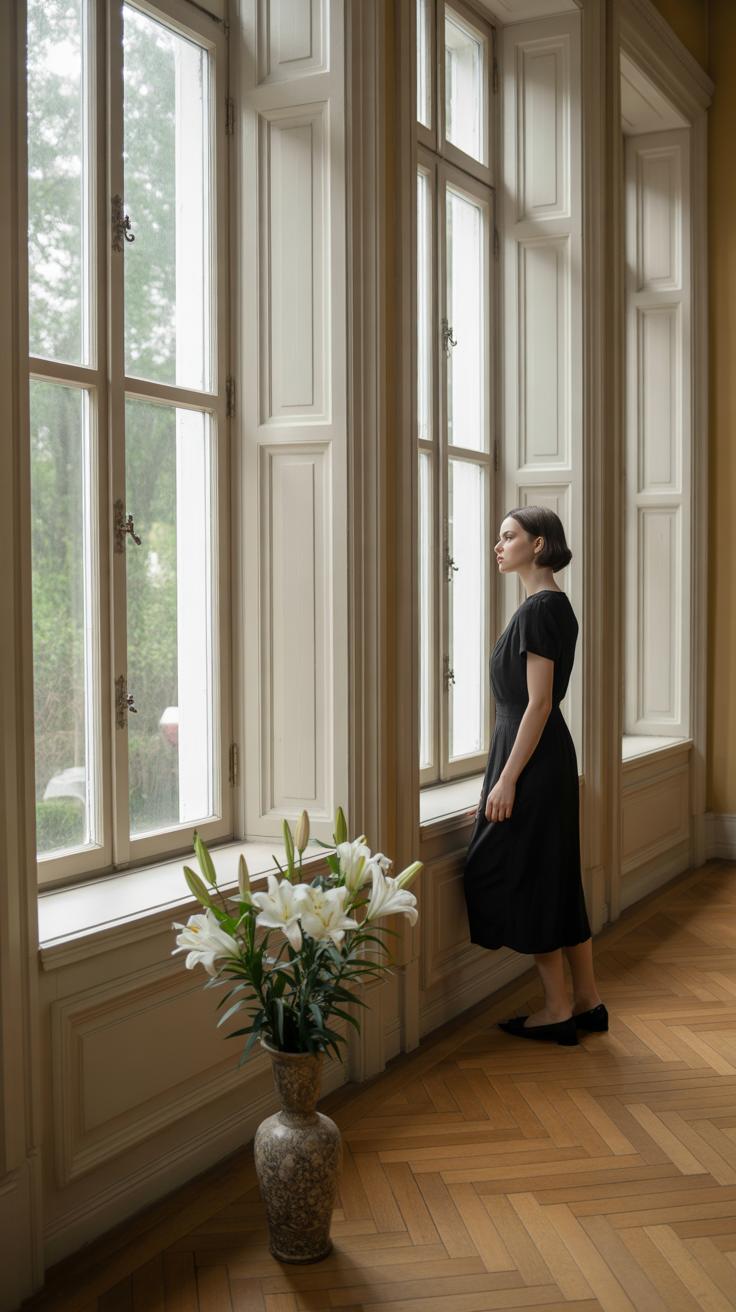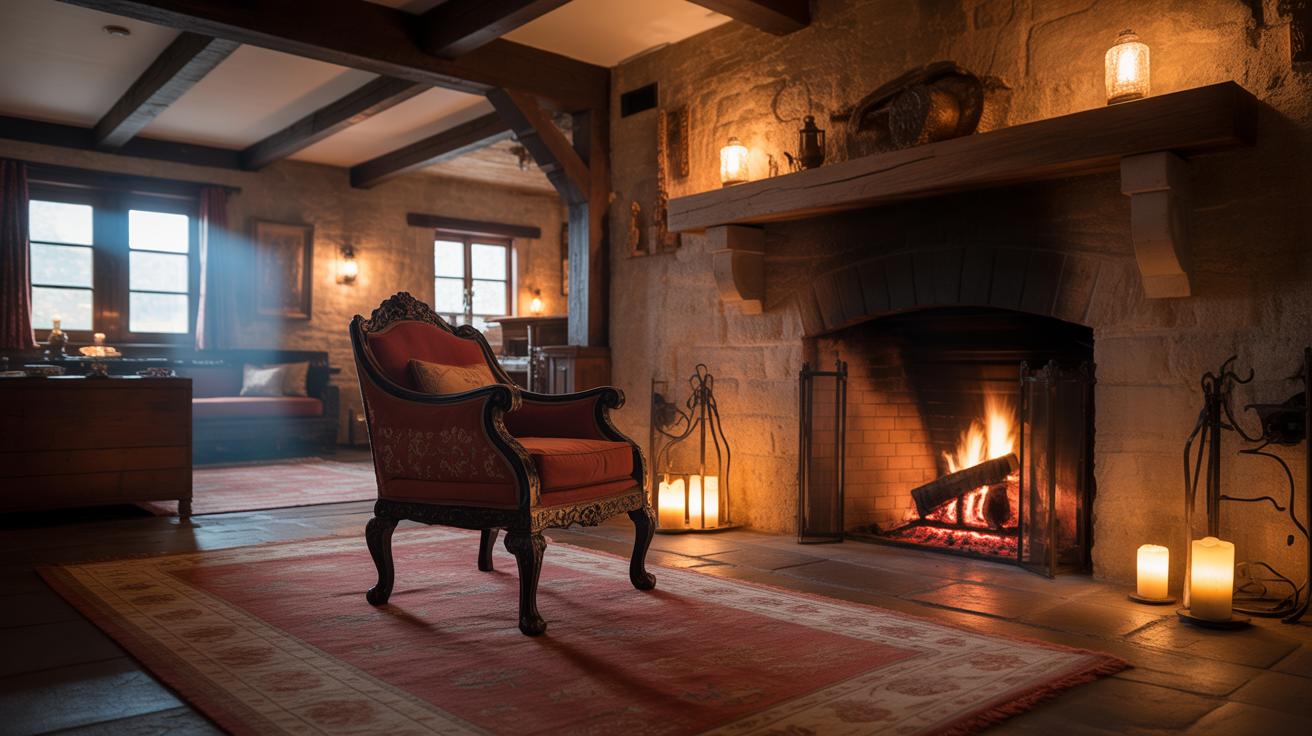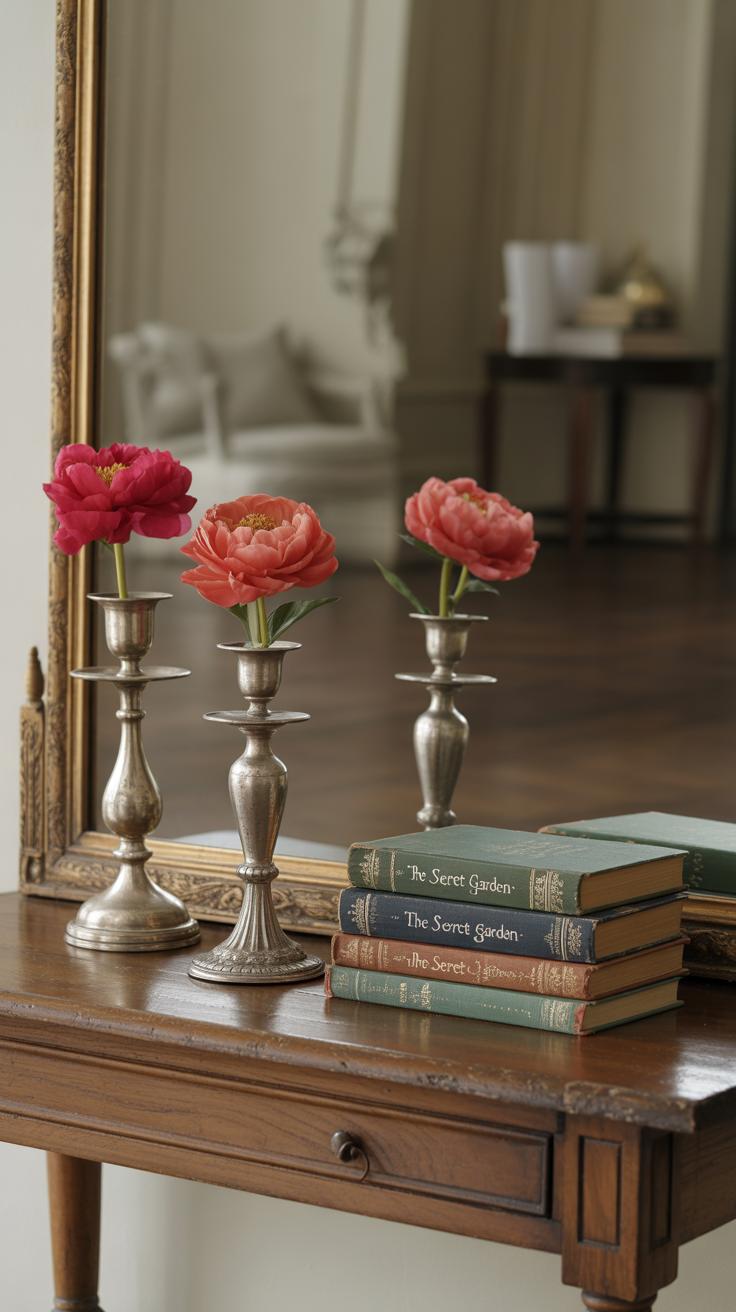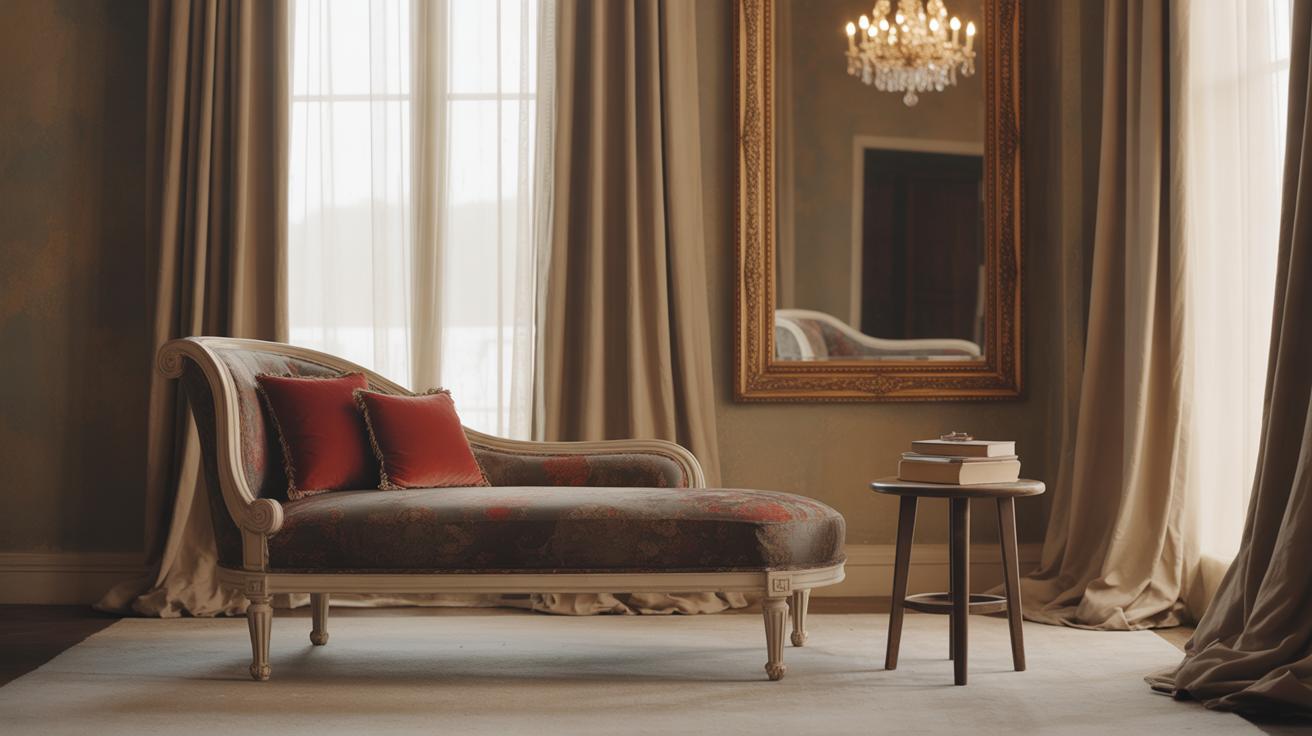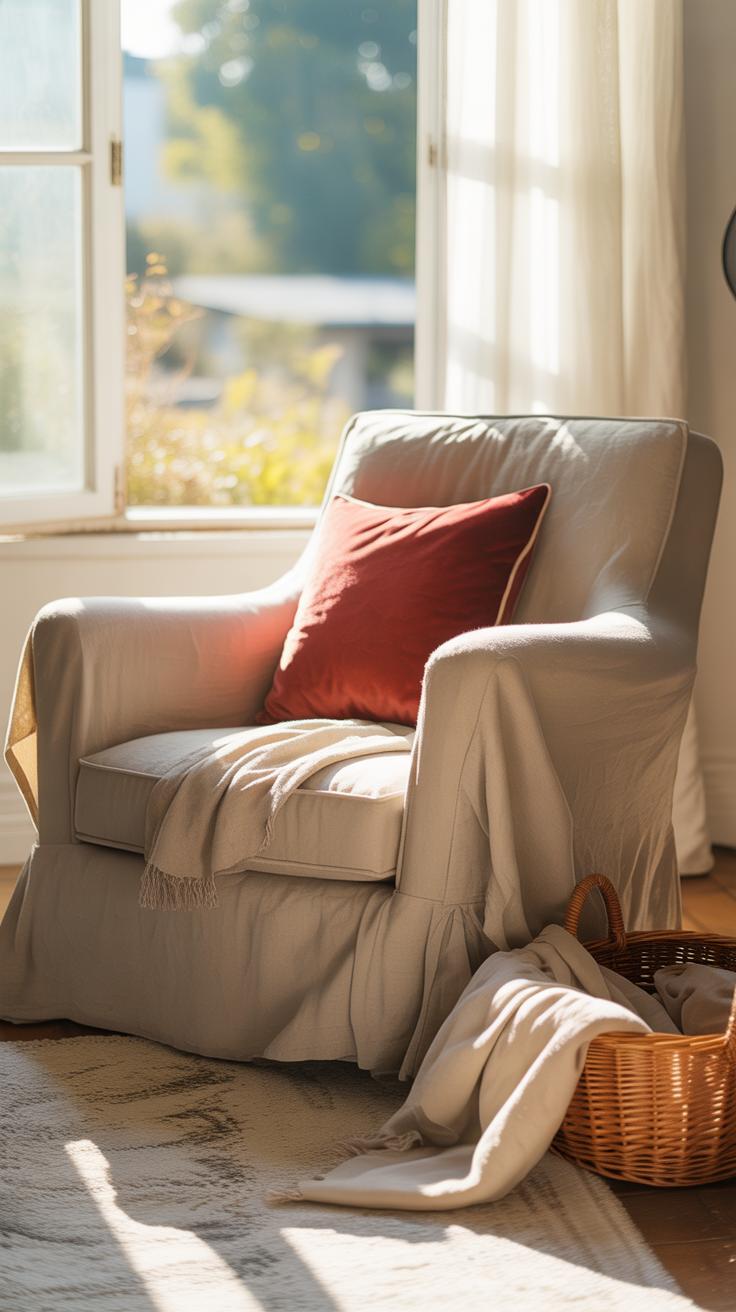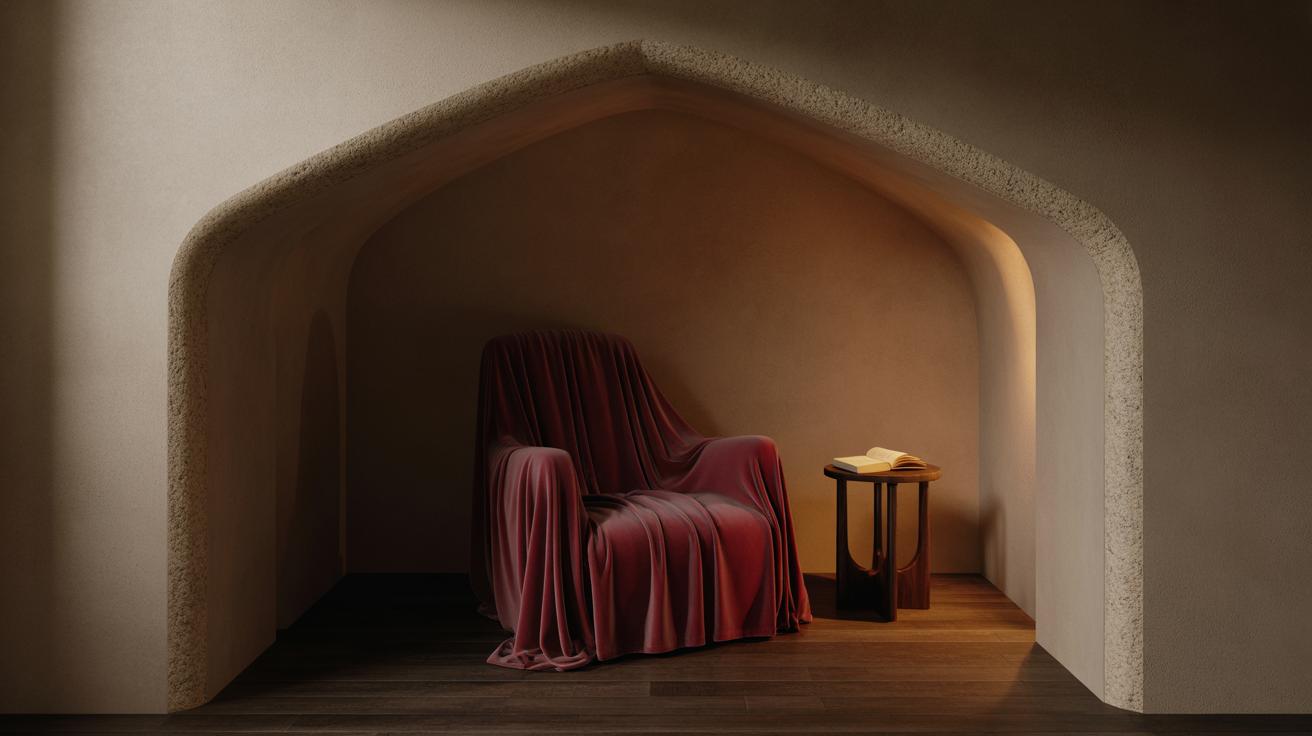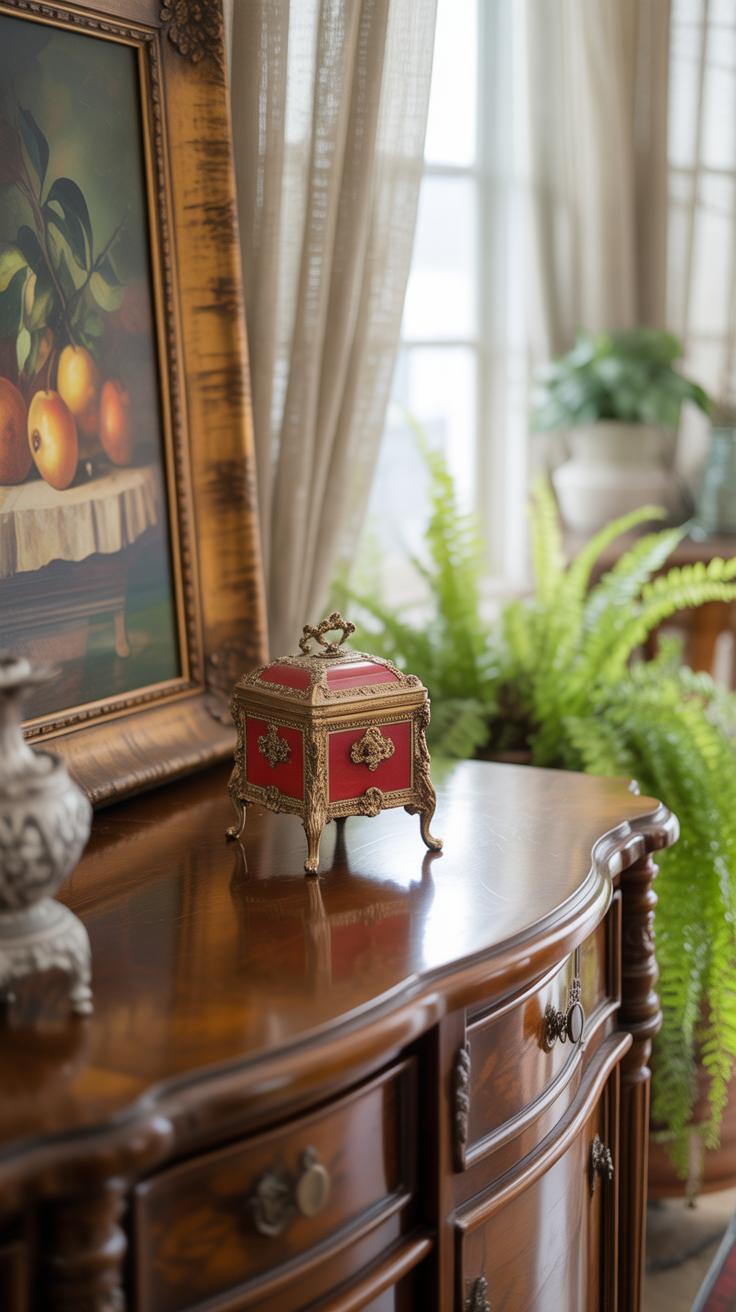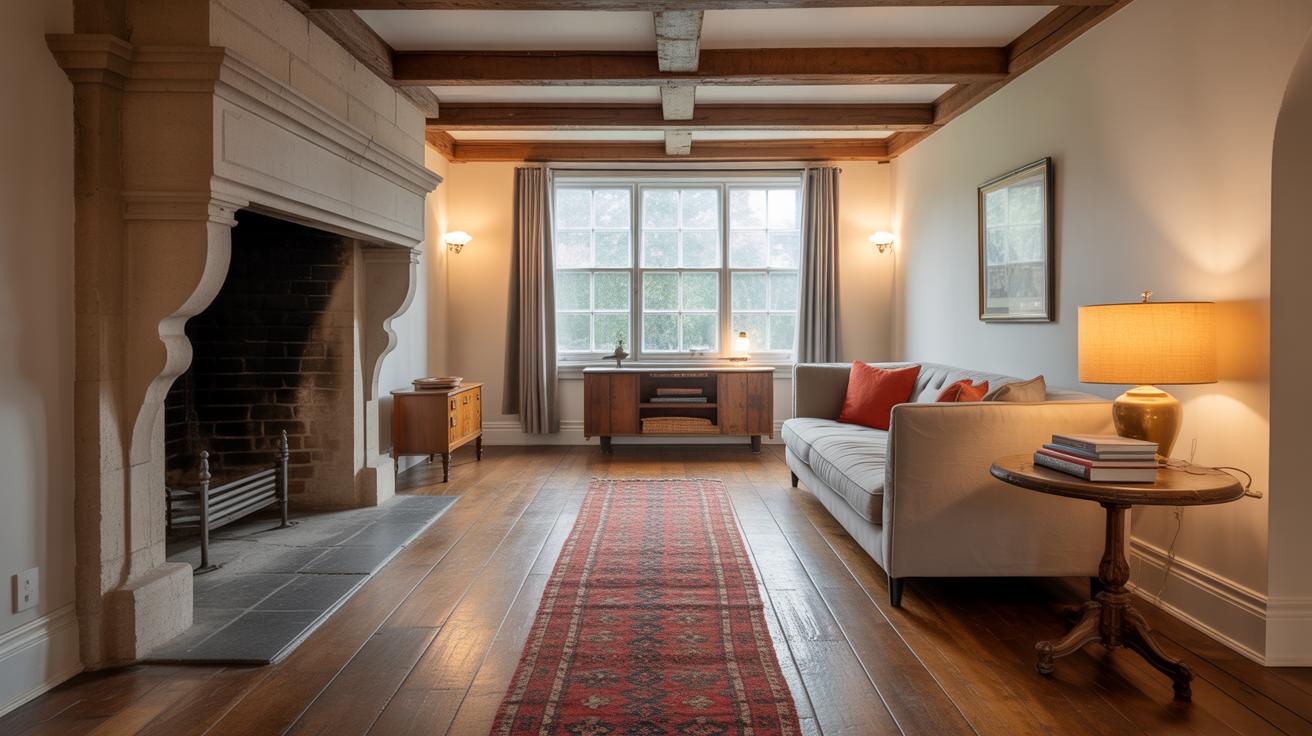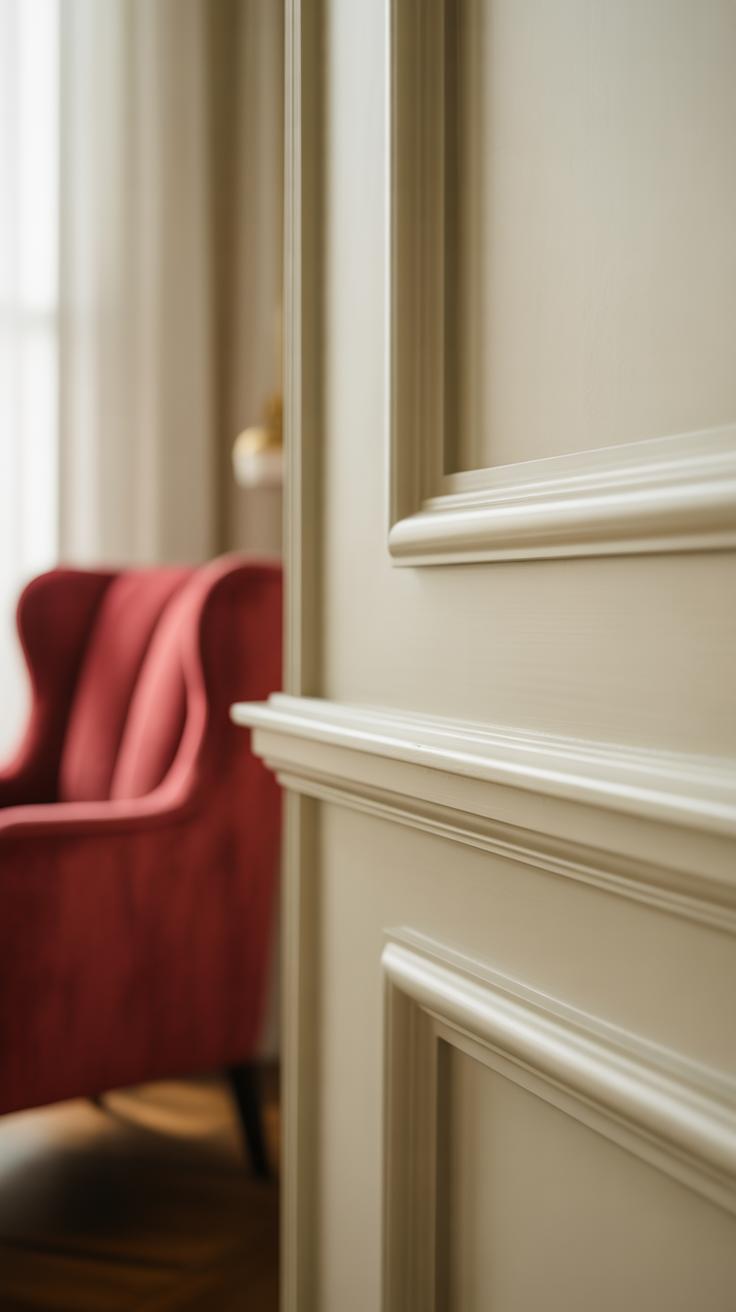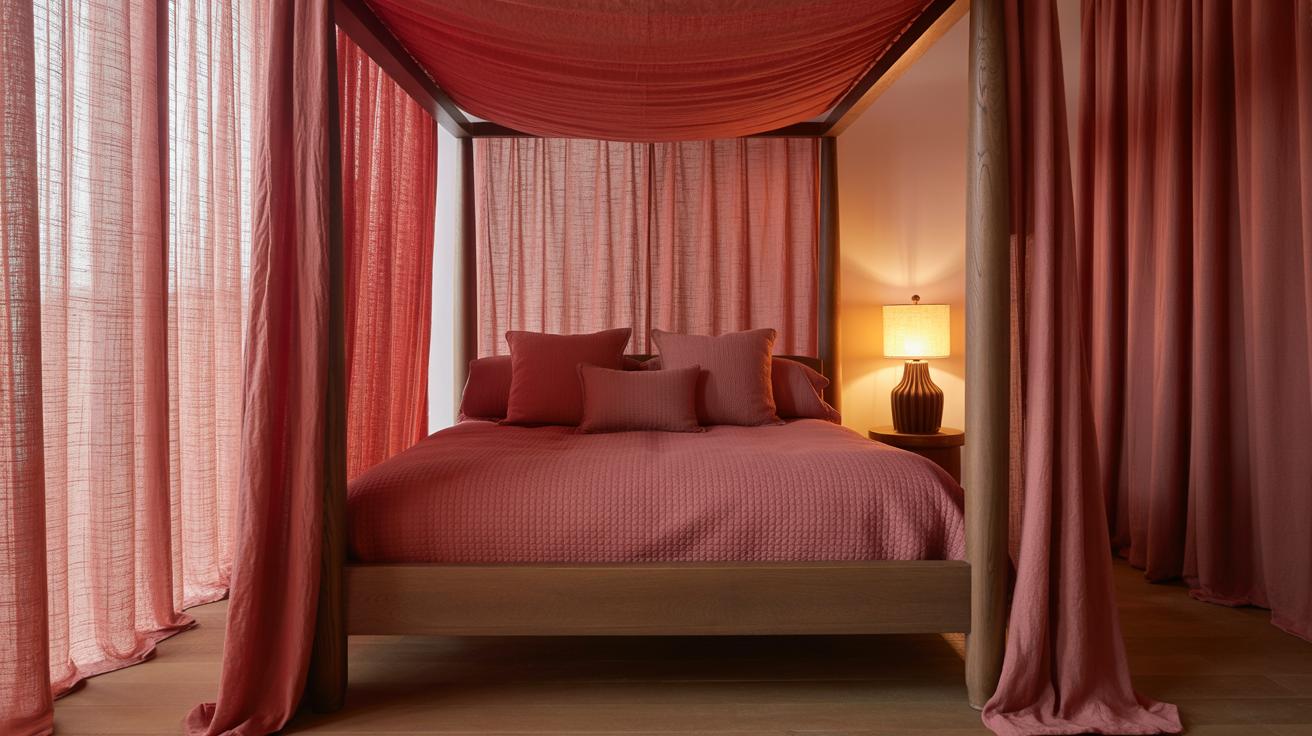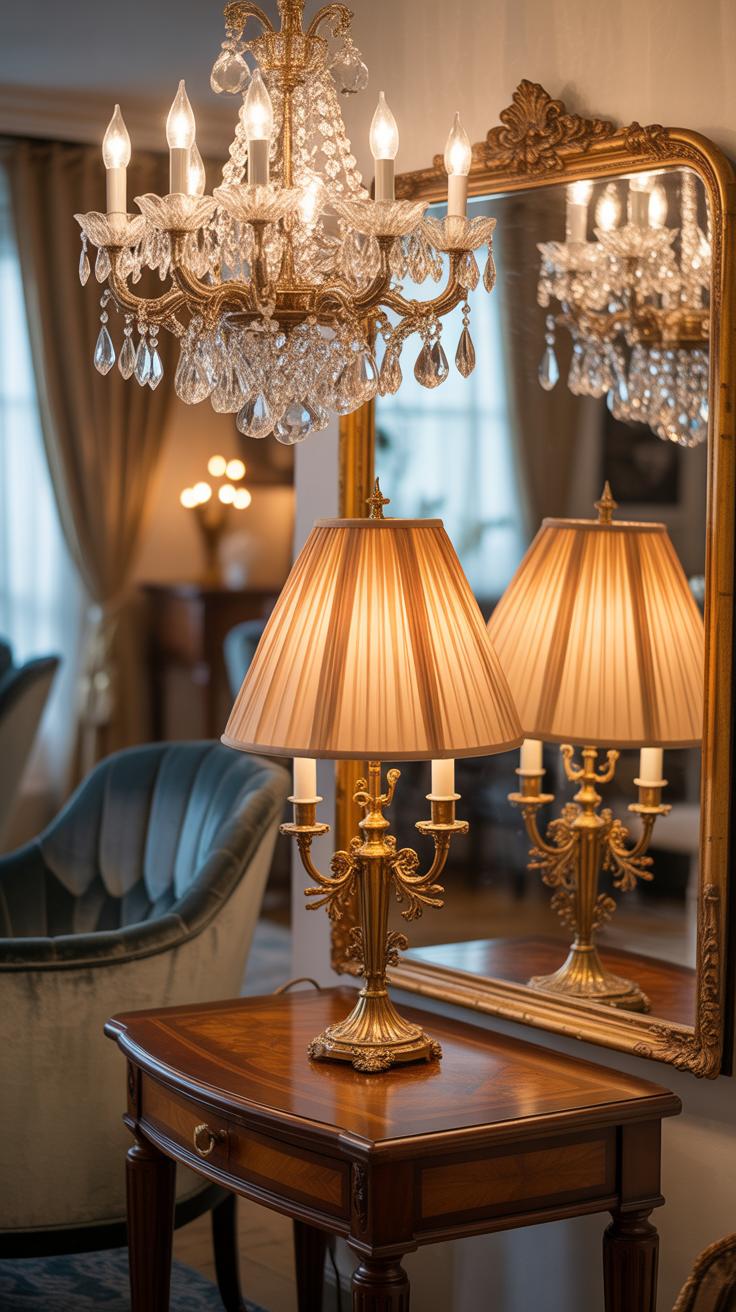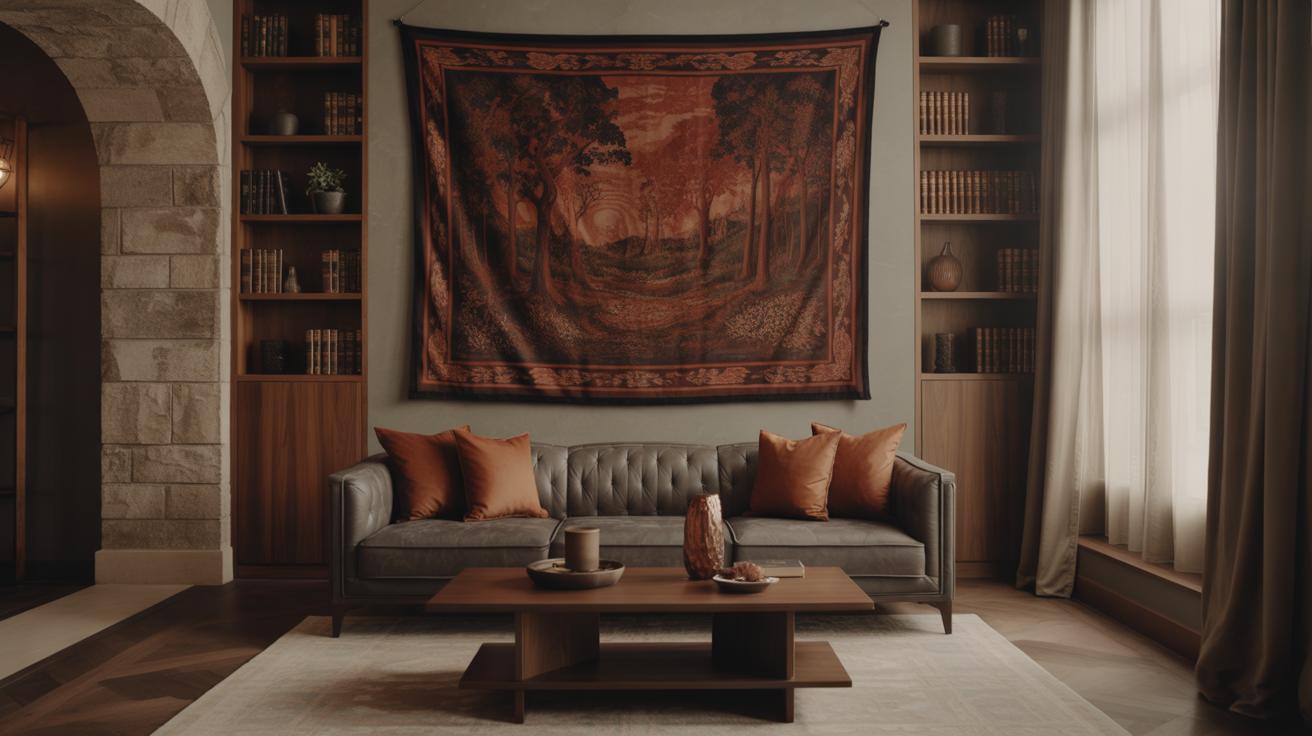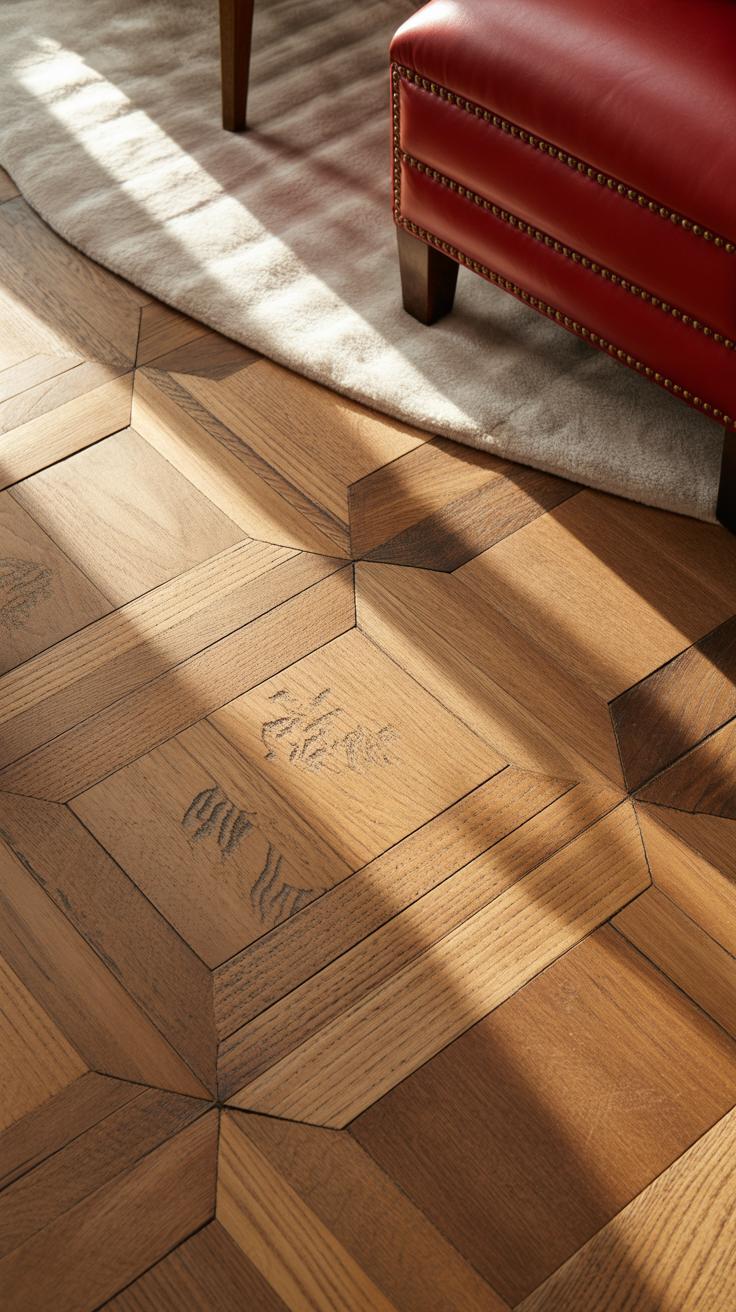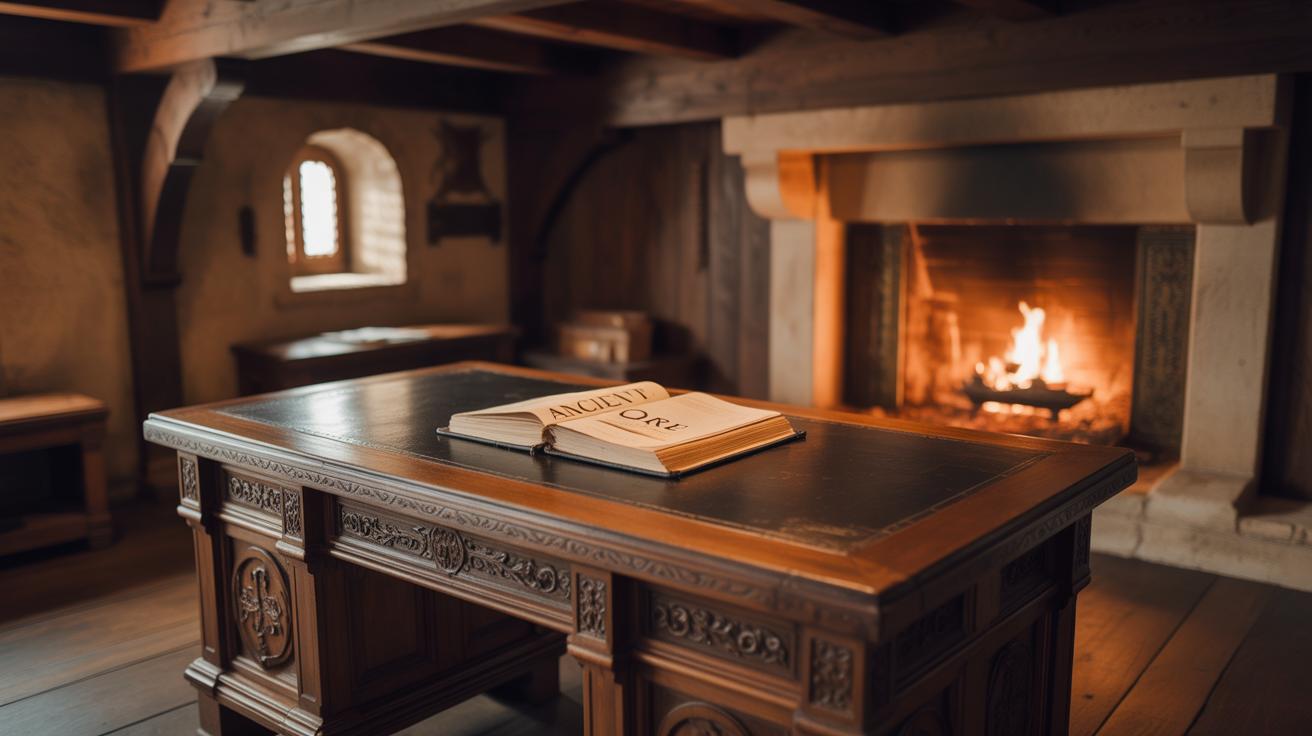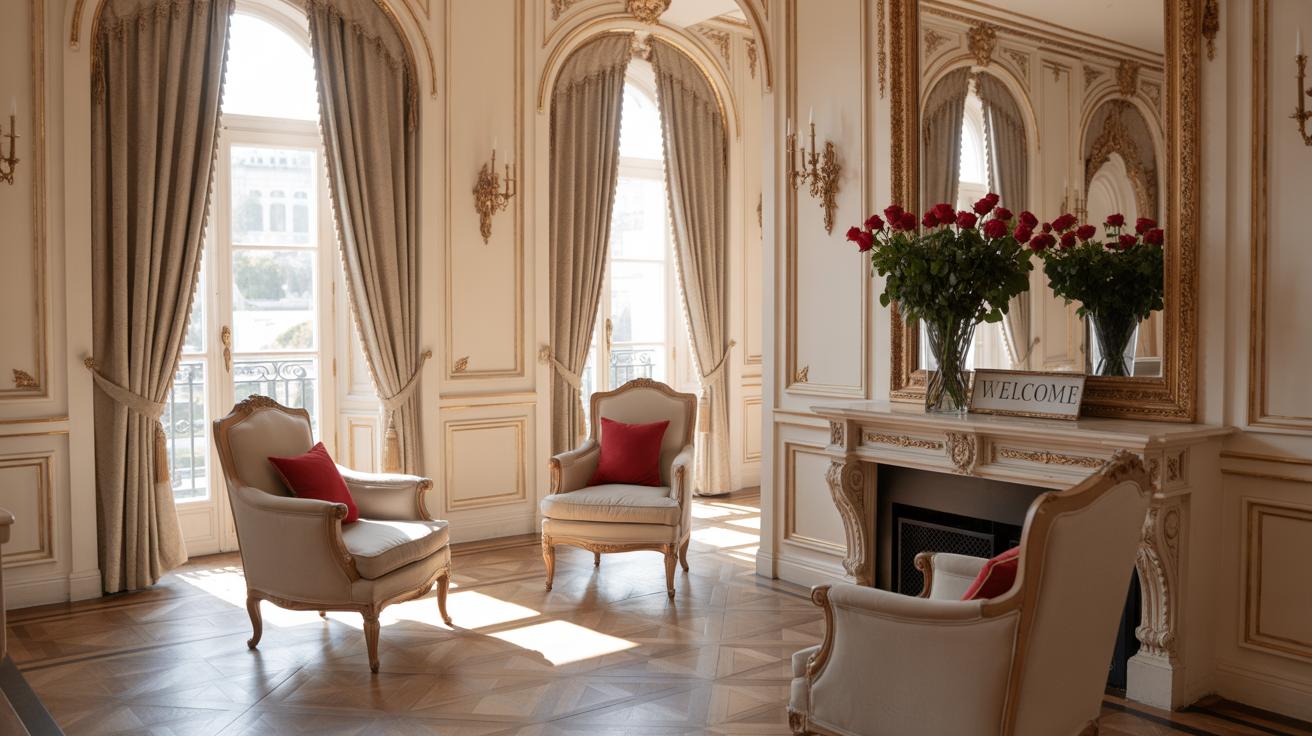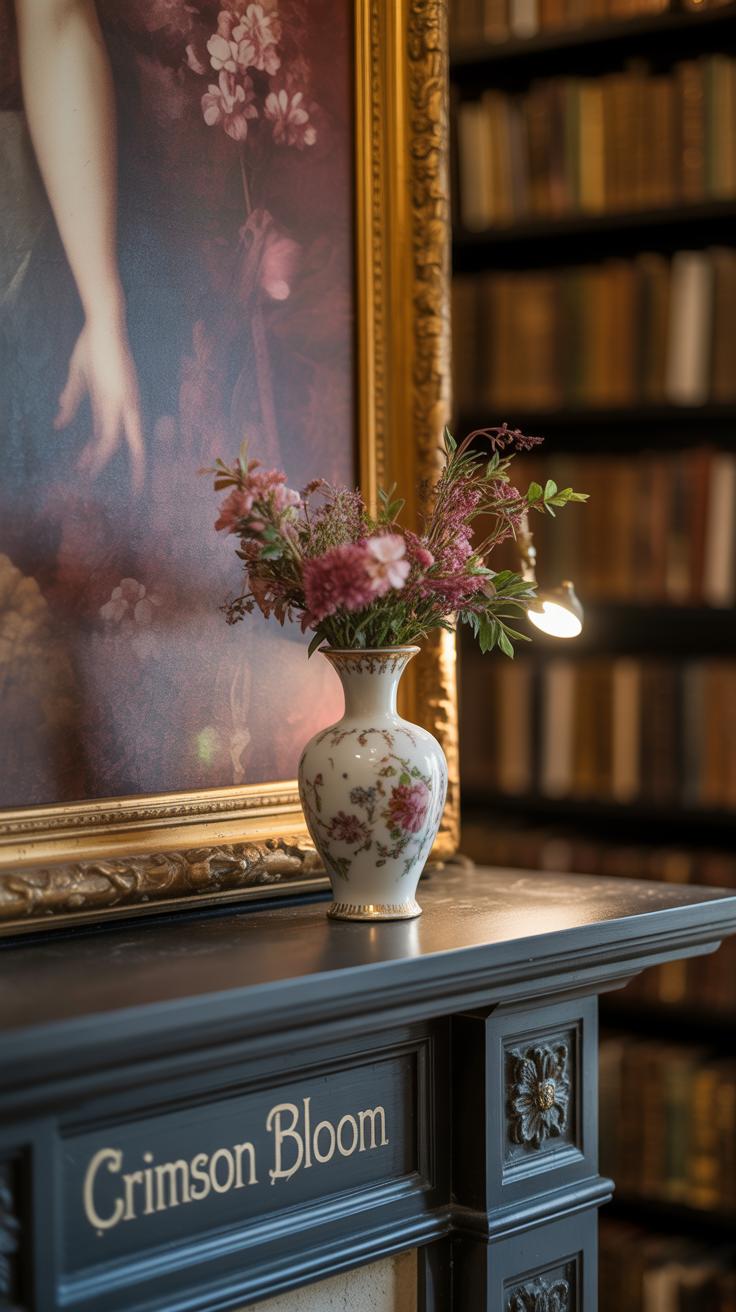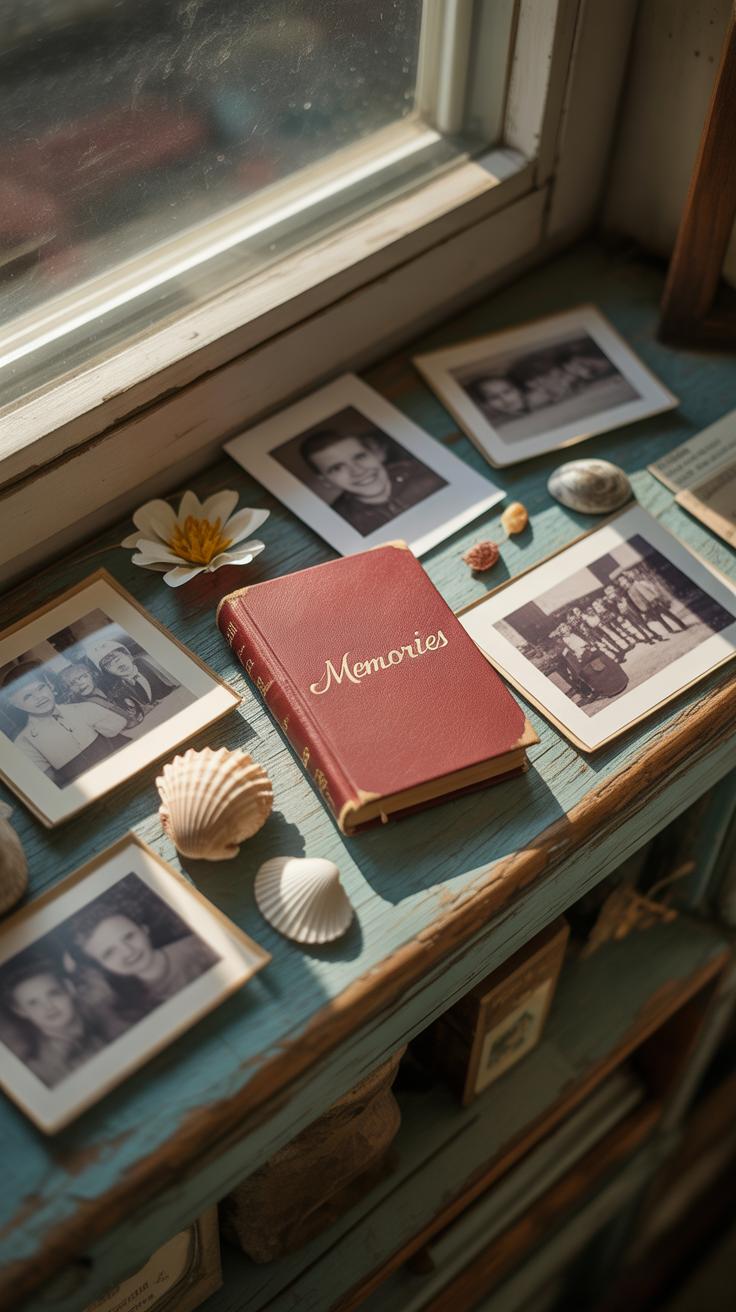Introduction
French chateaux represent a range of manor houses and palaces known for their stately presence and refined charm. These grand homes from French-speaking regions, often featuring Baroque and classical architectural elements, hold a rich history and a unique sense of style. Many chateaux are characterized by their elegant yet comfortable interiors which balance luxury with relaxation.
In this article, you will explore how to bring French chateau-inspired decor into your home. From selecting the right furniture and color schemes to understanding the architectural details, styling tips, to integrating antique elements, this guide will help you create rooms that echo the understated elegance of these historic residences while remaining welcoming and livable.
The History and Architecture of French Chateaux
French chateaux began largely as fortified country homes for nobility during the Middle Ages, evolving over centuries into symbols of status and refinement. They were not castles in the defensive sense, but rather comfortable retreats rooted in the countryside—places where noble families could live away from the bustle of Paris or other cities. Their design reflects this dual role: a mix of grandeur for impressive appearances and practical comfort for daily life.
The architectural styles shifted through time. Early chateaux might look quite medieval, but by the Renaissance and beyond, Classical influences brought symmetry and balance to their facades. You can see the transition in places like Château de Chambord, which mixes traditional medieval elements with Renaissance design. It’s fascinating how these buildings tell stories of changing tastes and power structures.
Some key architectural traits stand out: you’ll often find stone facades that feel solid yet elegant. The roofs, often steep and covered with slate, add verticality and character. Grand staircases—both inside and outside—serve as focal points and convey the home’s importance. Large windows placed symmetrically allow light in but also create a sense of order. These features aren’t just decoration—they communicate status, taste, and even security, in a subtle way.
Inside, layouts encouraged both private family life and hosting guests for elaborate social functions. Spacious reception rooms, long galleries, and formal dining areas mirror the lifestyle of the wealthy owners, who depended on the chateau not only as a home but as a stage for political and social activity.
French chateaux were more than residences; they were markers of social standing. Owning a chateau meant belonging to a class that wielded power and influence. This role shaped the careful attention given to every detail—from the grand approach and gates to the placement of rooms for hosting salons and balls. While the architecture and decoration aimed to impress, they also needed to accommodate practical needs, like agriculture and estate management, since many chateaux were centers of large rural properties.
When you bring this style into your living space, you’re not just copying a look. You’re hinting at a lifestyle where comfort meets refinement, where every object could hold a story about heritage and place. It’s perhaps why the style feels timeless yet surprisingly adaptable.
Essential Elements of French Chateau Decor
Furniture and Fabrics
French chateau interiors tend to favor carved wood pieces that carry a certain old-world weight—think chairs with ornate scrollwork or dining tables with turned legs. These aren’t just any chairs. You might find yourself drawn to their heavy frames, yet they often have plush upholstery that invites you to sit a while. Sofas are usually upholstered in velvets or linens, soft to the touch but durable enough for daily use—though maybe a bit better cared for than your average couch.
Antique tables, often with a weathered patina, add charm without feeling stiff. The fabrics go beyond decoration; they add texture and history. Velvet suggests luxury but also warmth; linen balances the richness with a laid-back edge. I’ve noticed that mixing these fabrics feels more lived-in, less museum-like, making the space more approachable.
Color Schemes
Colors in a chateau-inspired room usually lean toward muted pastels or creams—subtle and soft, not bright or overwhelming. These tones create a calm and inviting atmosphere, but there’s often a punch somewhere in the room. Sometimes it’s a gilded mirror catching the light, sometimes deep, rich hues like navy or forest green in an accent chair. Gold accents are almost unavoidable and add a gentle touch of grandeur without shouting for attention.
Natural tones—like soft grays, gentle beige, or dusty blush—ground the room and give it a lived-in ease. The palette could feel a bit safe if it weren’t for the occasional surprise, like a deep red cushion or an elaborate rug pattern. This hit-and-miss approach to color mixing is what makes the style feel timeless yet personal. You might wonder if mixing softness with bold colors risks clashing—maybe, but when done right, it’s quite captivating.
Creating Relaxed Rooms with French Chateau Influence
Making a room feel both elegant and comfortable can seem tricky when you think about French chateau style. The grand chandeliers and ornate moldings can easily tip a space into feeling too formal or stiff. But that’s not the whole story. You can blend these formal elements with softer, more inviting touches to strike a balance that’s—well—pleasantly lived-in.
Try pairing a crystal chandelier with a plush sofa upholstered in linen or velvet. This mix adds refinement without sacrificing comfort. Don’t be afraid to layer cozy throws or cushions in muted shades—they soften the overall look. It’s the little things, like well-worn armchairs or textured rugs, that can quiet the grandeur and make the room approachable.
Light also plays a surprisingly big role. French chateaux often have large windows and high ceilings, which bring in a lot of natural brightness and create an airy feel. If your windows aren’t enormous, think about swapping heavy drapes for light curtains or sheer fabrics that still filter in sunlight. And an open floor plan or minimal clutter lets the space breathe, so it doesn’t feel cramped or heavy.
In the end, consider how you want to live in the room. It’s less about perfect symmetry or strict rules, and more about mixing elements so that elegance and ease coexist. How can you make formal pieces feel like a natural part of your daily life? Maybe that’s the question worth asking as you design.
Using Antique and Vintage Pieces Effectively
Incorporating genuine antiques or vintage items into your French chateau-inspired space brings a kind of depth and soul that new furniture sometimes lacks. But choosing the right pieces is tricky. You want furniture that hints at history without overwhelming the room or feeling out of place with more contemporary elements. Look for classic materials—aged woods, wrought iron details, and carved accents. Chairs with cabriole legs or distressed finishes create that subtle link to old-world charm. Yet, don’t shy away from mixing in more modern pieces; small contrasts can refresh the space rather than clutter it.
When it comes to antique textiles and accessories, they need gentle handling. Rugs, curtains, and decorative fabrics from past centuries add texture but they’re fragile. Light daily use is fine if you keep them out of direct sunlight and clean spills immediately. Dry cleaning is often your safest bet, but spot cleaning with mild solutions can work too if you’re cautious. Sometimes I’ve laid antique rugs in low-traffic areas just to preserve their character. Decorative objects—porcelain, brass candlesticks, or vintage mirrors—offer a timeless feel, but remember they age differently. Dust carefully, avoid harsh cleaners, and let their imperfections show—they tell stories that brand-new pieces can’t.
Incorporating Architectural Details and Molding
When you think of French chateau interiors, architectural details like crown moldings and paneled walls instantly come to mind. They create a sense of history and refinement that’s hard to replicate with furniture alone. You don’t have to live in a centuries-old home to bring this vibe into your space, though. Adding or even restoring moldings can make a big difference, subtle but unmistakable.
Consider crown moldings that follow the ceiling’s lines but don’t overwhelm. The right proportions matter—too large, and the room might feel cramped; too small, and it gets lost. Ceiling medallions or roses are small but impactful, especially if you want to hang a chandelier or just draw the eye upward. They anchor the ceiling in a way that feels intentional.
Paneled walls, whether in full wood or decorative wainscoting, also bring warmth and depth. They break up flat surfaces, creating visual interest without shouting for attention. Sometimes just repainting or refinishing existing trim can revive a room’s character. If you’re up for a bit of a project, molding profiles with soft curves or floral motifs add that little extra.
- Choose moldings with simple, elegant profiles—think subtle scrolls or leaf patterns rather than overly busy designs.
- Don’t shy away from mixing plaster and wood details; the contrast can add richness.
- Fresco-inspired wall treatments alongside wood panels work well, creating a layered, lived-in feel.
That said, be careful not to overdo it. Too much trim can feel fussy, almost like you’re trying too hard. I once experimented by adding ceiling roses all over a large room—it felt like a decoration overload. Now I believe less is more, and well-placed accents are enough to suggest that classic French charm.
Think about your ceilings and walls as a canvas. What small architectural touches could you add without making the space feel heavy? Sometimes bringing in those details creates a room that feels both elegant and approachable, much like the chateaux themselves.
Choosing Lighting for a French Chateau Atmosphere
Lighting plays a key role in shaping the feeling of a French chateau-inspired room. The charm lies in blending elegance with a sense of ease, and lighting can make or break that balance. When selecting fixtures, keep in mind the subtle yet refined styles typical of chateau interiors—nothing too flashy, but never plain either.
Chandeliers and Wall Sconces
French chateaux often feature chandeliers that are graceful without being overwhelming. Think wrought iron or aged brass with delicate curves, sometimes paired with candle-style bulbs. They don’t have to be enormous; even mid-sized chandeliers work well over a dining table or a sitting area. Place them where they catch the eye but don’t dominate the space. Wall sconces offer a softer glow, often with fabric lampshades or frosted glass, emphasizing warmth over brightness.
Try layering lighting — a chandelier overhead with sconces flanking a mirror or artwork adds depth and interest. In some rooms, pairing a rustic iron chandelier with more ornate sconces creates a nice tension between relaxed and formal.
Maximizing Natural Light
Natural light feels essential in French chateau decor — it highlights textures and brightens intricate details. Keep window treatments light, airy, and minimal. Sheer curtains or lightly patterned linens work best; heavy drapes risk darkening the room and losing that open feel. Mirrors opposite windows help bounce daylight deeper inside, making the space feel bigger and more inviting.
Reflective surfaces like polished wood, marble, or even subtle metallic accents also enhance natural light without appearing shiny or cold. You might be surprised how a well-placed glass vase or a gilded frame can alter the room’s ambiance as the sun moves. Let the daylight move through your space rather than block it, and you’ll have that timeless, elegant atmosphere that feels effortless rather than staged.
Flooring Choices to Match French Chateau Style
Hardwood and Stone Floors
Hardwood and stone have long been staples in French chateau interiors. They bring a sense of history and permanence to a room, while still feeling warm and inviting. Choosing hardwood? Opt for wide planks with a matte or slightly distressed finish—it’s less about perfection and more about character. Oak is often favored, but walnut or chestnut can work if you want something richer.
Stone floors, on the other hand, deliver a cool, grounded feeling. Think large limestone or travertine tiles in neutral tones. These create a subtle backdrop that complements rather than competes with furnishings. Stone can be colder underfoot, so location matters; kitchens and hallways might suit stone better than bedrooms or living rooms.
Both materials age well and can be refinished or resealed. This lets you keep that authentic charm without feeling stuck. Choosing between the two often comes down to your climate, lifestyle, and whether you’d value warmth or durability more—but mixing them in different areas isn’t off the table either.
Using Rugs for Warmth and Style
Rugs add softness where stone or hardwood doesn’t, which is key for comfort. The trick is to find rugs that echo the elegance of French chateaux but don’t steal the spotlight. Persian or Aubusson-style rugs, with their muted patterns and faded hues, work beautifully here.
Placement counts. Layering rugs can feel cozy without cluttering the floor visually. For example, a large neutral rug under a dining table paired with a smaller patterned rug near seating creates balance. Also, think about texture—wool or silk-blend rugs introduce subtle sheen and depth.
Take a moment to think: how much foot traffic does this room get? Wool is durable but softer parts of your home might call for gentler fibers. Rugs also affect acoustics, cutting down echoes, which can otherwise make a spacious chateau-inspired room feel a bit cold.
Remember, rugs should invite you in—to stay, to relax—without overwhelming the elegant simplicity that defines this style. If you’re unsure, start small. A well-placed runner or an accent rug can transform a space little by little.
Decorative Accessories and Art for Chateau Rooms
Choosing decorative accessories and art for a French chateau-inspired room means finding pieces that speak to history but also feel personal, if that makes sense. It’s not just about filling the room but about creating moments that draw you in. For example, vintage porcelain vases with soft floral patterns can quietly nod to old-world elegance while letting your personality peek through. Sometimes simple arrangements of fresh or dried flowers in these vases can soften the formal atmosphere.
When selecting artworks and mirrors, you want to think about light and space. Large gilded mirrors with some wear can reflect natural light in unexpected ways, making the room feel both larger and more inviting. Paintings—landscapes or portraits in muted tones—work well, but avoid overly dark or modern pieces that might disrupt the calm. Prints of botanical studies or Tuscan scenes might also add just the right touch without overwhelming.
Creating small vignettes with objects like old books, candles, or figurines really brings warmth. Stack a few leather-bound books on a side table beside a scented candle and a small ceramic bird, for instance. It’s these little clusters that give a room that lived-in, curated feel—almost like the chateau itself is telling a story through its treasures. Don’t be afraid to mix in the unexpected, too; a subtle contrast can often make the room feel more personal and less like a museum.
Bringing It All Together with Personal Style
Creating a French chateau inspired room that feels both elegant and relaxed is really about mixing what you love with the classic elements of the style. It’s tempting to follow every rule of chateau decor, but your space should reflect your personality too. Think of your favorite antique armchair paired with a sleek, modern lamp you found recently. That contrast can be surprisingly charming.
When you blend old and new, focus on these ideas:
- Choose one or two statement antiques that draw the eye but don’t overcrowd the space.
- Bring in simple contemporary pieces that offer clean lines and neutral finishes.
- Use textures—like a velvet cushion or a linen throw—to soften harder materials.
Finding balance in the room’s layout really matters. Place furniture so it encourages movement and conversation, without making the room feel staged. Colors should flow naturally—soft creams and muted blues work well, but a pop of deeper tone here or there keeps things grounded.
Sometimes, you’ll wonder if your choices are too modern or too traditional. That’s okay. The imperfect mix often makes a room feel lived-in and authentic. Don’t rush to resolve every tension; your space can hold contradictions without losing charm.
Conclusions
French chateau decor combines the grandeur of classic architecture with the comfort needed for modern living. By focusing on natural materials, timeless furniture, soft color palettes, and delicate textiles, you can recreate the look and feel of these elegant homes in your own space. Layering antique pieces with modern comforts makes rooms feel both sophisticated and relaxed.
Bringing this style into your home invites you to enjoy a distinctive aesthetic that honors history while catering to your lifestyle. Use the ideas from this article as a starting point to design elegant, inviting rooms inspired by French chateaux that reflect your taste and welcome guests warmly.

